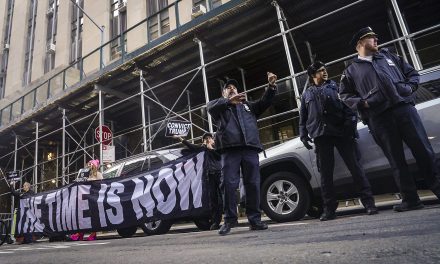
In a little over four years, new heavy truck makers will have to cut harmful nitrogen oxide pollution more than 80% under new standards released in late December by the U.S. Environmental Protection Agency.
Some environmental and health advocates praised the standards but others said they do not go far enough to curb nitrogen oxide, which can cause issues including respiratory illness, cardiovascular problems and even death.
Problems are more acute in industrial and port areas, causing health problems for low-income residents who live there. The EPA says 72 million people live near freight routes in the U.S.
The standards, coupled with greenhouse gas emission limits for 2023, and government investments, eventually will lead to zero-emissions electric and hydrogen fuel cell trucks carrying most of the nation’s freight, the agency said.
“This is just the first action under EPA’s clean trucks plan to pave the way toward a zero-emission future,” Administrator Michael Regan said in a prepared statement.
The standards, the first update in more than 20 years, limit nitrogen oxide emissions from new semis and other heavy trucks to 35 milligrams per horsepower hour. The current standard is 200 milligrams, the EPA said.
One horsepower hour is the equivalent of energy consumed by working at the rate of one horsepower for a single hour.
EPA officials say catalytic reduction technology is available for truck engine manufacturers to meet the large reduction when the standards take effect in 2027. The agency also says the standards can be met at a reasonable cost. The stronger standard will not change and will remain in place for multiple years, the EPA said.
As the fleet of heavy trucks is replaced by newer vehicles, it should reduce nitrogen oxide pollution by 48% by 2045, the EPA said.
The agency expects greenhouse gas standards and incentives in the Inflation Reduction Act to bring the replacement of all diesel trucks with zero-emissions alternatives, said Margo Oge, a former director of the EPA’s transportation and air quality office.
Oge, now a volunteer with the Environmental Protection Network, expects at least half of all new heavy trucks to be powered by batteries or hydrogen fuel cells by 2030.
The Truck and Engine Manufacturers Association said the new standards will be challenging to put in place, but its members will work with the EPA.
“Ultimately the success or failure of this rule hinges on the willingness and ability of trucking fleets to invest in purchasing the new technology to replace their older, higher-emitting vehicles,” the association said in a prepared statement.
A group representing independent truck drivers, the Owner Operator Independent Drivers Association, said small business truckers won’t be able to afford new trucks, so they’ll stay with older, less-efficient ones.
The new rule lets the trucking industry keep making vehicles that pollute the air, the Natural Resources Defense Council said.
“The agency missed a critical opportunity to slash soot and smog and accelerate the shift to the cleanest vehicles,” the group said in a prepared statement.
However, the American Lung Association called the rule an important step in reducing emissions that can cause lifelong lung damage.
“Now, EPA must build on today’s rule,” the group said. “These standards must dramatically reduce greenhouse gas emissions from trucks to drive a nationwide transition to zero-emission vehicles.”














